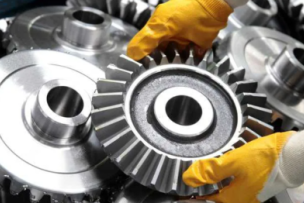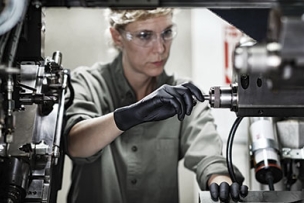MCR Safety has over forty years of experience as a leader in the field of personal protective equipment (PPE). Our assortment of offerings includes gloves, glasses, and garments which are made from the highest quality materials available to ensure maximum safety, comfort, and style.
Automotive work is dangerous. As we outlined in MCR Safety's Automotive Assembly blog, the vehicle manufacturing industry reports a significantly high number of injuries. From working with the thin gauged metal required for the systems in today’s electric vehicles to the metal used in all automotive frames, not wearing gloves isn’t an option for workers interested in keeping their hands safe and protected.
When gloves are not worn, there’s no mistaking an automotive worker’s cuts, scrapes, bruises, or permanently grease-stained hands and black fingernails. Whether on the factory floor or in a small-town garage, working on automobiles means cramming hands into tight spaces filled with sharp metal corners, oils, and abrasive objects.
Humans have worn gloves for thousands of years to protect their hands. These were often leather gloves with limited dexterity and little to no cut protection. Then, glove innovation blossomed in the 1970s. OSHA was formed and glove makers determined that some of the polymers developed during World War II could offer customers easier-to-wear gloves with increased protection. For the first time, cotton gloves began being dipped in and coated with rubber latex.
Since the 1970s, gloves have continued to get thinner but stronger, using superior fibers like DuPont™ Kevlar®, Dyneema®, and MCR Safety’s Hypermax®. Both advanced coatings and fibers have helped MCR Safety manufacture extremely lightweight gloves. Since automotive workers, especially assembly specialists, are feeling bolts, components, wires, and parts, they must rely on gloves that provide an abrasive coating and are super thin for increased dexterity.
In this blog, MCR Safety highlights the featherweight gloves styles available to automotive workers. They've come a long way in glove technology and development over the past five decades.
The Transition from Leather to String Knit Gloves
Leather gloves still fulfill a need in the marketplace, as they have for thousands of years. They are durable and offer high levels of abrasion protection and heat resistance for activities such as welding. Unfortunately, leather gloves are traditionally stiff and bulky, rendering them wholly unsuited to use when assembling nuts and bolts onto vehicles.
So, is there one glove you can use across your entire facility? Application-specific gloves have been around for hundreds of years. Don’t risk a worker’s safety by applying a “one-type meets all needs” approach if the only purpose is to consolidate gloves for financial concerns. A one-glove solution doesn’t exist for all workers, especially in an automotive plant.
Some workers may still need leather gloves for welding automotive parts or frames, whereas other workers may need an ultimate sense-of-touch glove to feel small parts. All gloves have their purpose and place in an automotive facility.
Finding the Balance
Unlike leather gloves, string knit gloves conform to the hand better and offer more dexterity, but often at the expense of strength and protection. The key is finding the optimal balance between the features users demand and what makes practical sense.
It turns out that finding this balance is actually pretty simple. As mentioned above, today’s glove production combines the use of modern fibers with updated manufacturing techniques that engineer a stronger, more durable, thinner thread, and knit it into a high-gauge glove that combines comfort, dexterity, and protection into one affordable package.
Using technology to enhance glove performance is just what MCR Safety has done.
Gauge Breakdown
When glove manufacturers, like MCR Safety, throw out a term such as gauge, they are referring to the number of knitted stitches per inch in a glove. The bigger the gauge number, the tighter the knit, with more stitches per inch than gloves with a smaller gauge number. The gauge simply refers to the number of stitches per inch in a glove.
For automotive workers, a higher gauge glove equals better productivity and increased hand dexterity for grabbing parts, tools, and wires. This means an increase in the bottom line because of increased performance. Plus, higher-gauge gloves are cooler, offer additional comfort, and are form fitting. See a breakdown of gauges in the complete blog.
Browse MCR Safety's line of 18 gauge gloves that are perfect for automotive workers who need to combine safety with dexterity to handle automotive components.
Previously Featured on MCR Safety's blog.








Talk to Us!
Leave a reply
Your email address will not be published. Required fields are marked *